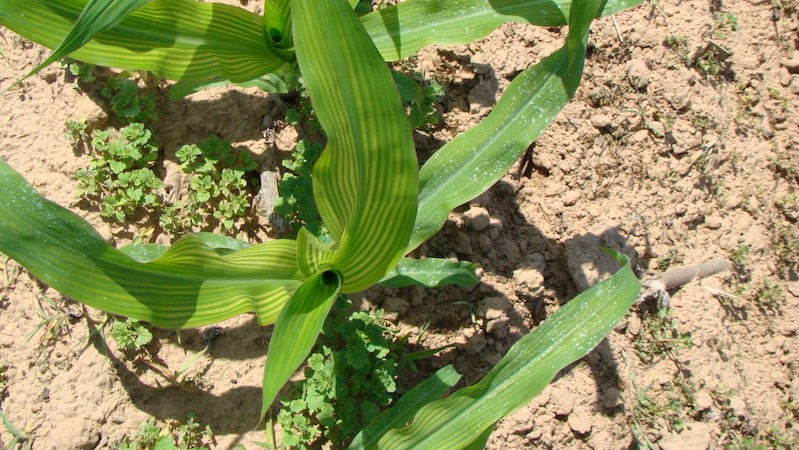New Mode of Action to Treat Superweeds
Its seeds are the size of a pencil point, nearly invisible to the naked eye, writes Tom Wood at AgriBusiness Global. Left alone, it can grow taller — and faster — than a Christmas tree. Part of an emerging class of so-called “superweeds,” Palmer amaranth continues to frustrate farmers nationwide with its dogged resistance to conventional herbicides. Ask a group of growers what keeps them awake at night and you’re sure to hear this superweed uttered with a sneer.
It wasn’t always this way. For years, pigweeds like Palmer amaranth and waterhemp were considered mere nuisances to growers. The numbers were daunting — a single stalk of Palmer amaranth can generate nearly 600,000 seeds, while waterhemp can produce up to 1 million seeds under optimal conditions — but they were well-controlled thanks to an arsenal of powerful, easily accessible, and relatively affordable contact herbicides like glyphosate and mesotrione.
Over time, however, the weeds got smarter, and those weeds reproduced. Growers started noticing that their traditional herbicide regimens were not getting the job done. Switching to another herbicide didn’t help much either; certain waterhemp strains now resist six herbicide modes of action, while some strains of Palmer amaranth resist up to five. These superweeds, which also include kochia, ragweed, and lambsquarters, are invading hundreds of millions of field acres across the country, leaving growers with lower yields and limited options. Seeds from these weeds can even spread through livestock feed, second-hand farm equipment, combine harvesting, and roadside mowing. According to University of Wisconsin researcher Vince Davis, herbicide-resistant weeds cost U.S. farmers $2 billion a year.
A Reliable Solution to a New Problem
In 2017, Belchim USA launched a partnership with several leading universities across the U.S. to test the selective contact herbicide pyridate against various strains of herbicide-resistant weeds. While pyridate itself has been around for years, researchers are just now exploring new uses and application options for this underutilized mode of action.
In corn field trials, researchers combined pyridate in a tank mix with widely used herbicides like glyphosate, atrazine, and mesotrione and applied the resulting mixture to test post-emergent weed control. When these pyridate solutions were applied to corn fields, researchers observed significant improvements in broadleaf weed control — up to 29% in some cases — with no injury to the corn. In one field trial conducted by University of Illinois, treating glyphosate-resistant Palmer amaranth with a tank mix solution of glyphosate, mesotrione, atrazine, and pyridate yielded 99% weed control 14 days after application. While in another field trial spearheaded by Iowa State University, a tank mix of pyridate, mesotrione, and glyphosate applied to HPPD-resistant common waterhemp resulted in 95% weed control just nine days after application.
Continue reading at AgriBusiness Global.





